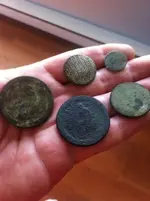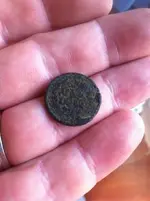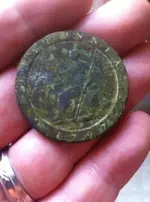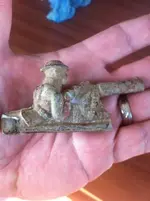Here's a little interesting tidbit about cartwheels. Great find!!!
The 1797 Cartwheel Penny, History and Inflation.
By Ozcopper
Click here to enlarge
The 1797 cartwheel penny is an important coin because it is the first coin made using a steam driven stamper, They were made by Matthew Boulton’s famous Soho Foundry in Birmingham.
Each coin contained an (Av) ounce of near-pure .999 copper. Thus we know copper was worth a penny an ounce in 1797. The weight of these coins also made them ideal as substitutes for weights in measuring produce, a task for which they were intentionally designed.
Australian Connection: In late 1800, The (ship) Porpoise arrived at Sydney Cove with almost 4 tons (£550 worth) of 1 oz., 1797 dated cartwheel pennies. The intention of the authorities was to stabilize the currency of the colonies.
In a bid to ensure that the coins were not immediately traded back out of the colonies, Governor King issued a proclamation, which effectively doubled their face value for use in trade within the colony and placed sanctions on their import into or export from the colony.
Purchasing Power: The inflation-adjusted purchasing power of the cartwheel penny is amazing! To buy the equivalent goods with one 1797 penny in 1998 would cost 6,829 pennies (Au $139.23) - even more in 2008 money as inflation is accelerating fast! (Source: House of Commons research paper 03/82 11th November 2003)
This valued a metric ton (32,150 troy ounces) of copper in 1797 at 223.26 pounds. Inflation adjusted for 1998 this equates to 1,524,642 pounds or Au $3,106,556 per ton. This start to make the current price of copper look cheap at around Au $9,000 per ton.
Click here to enlarge
Notes:
1. In 1797 there were 144 pennies to a pound this changed to 100 pennies to a pound in 1970
2. The 1797 price per ton is calculated by dividing 32,150 ounces by 144 pennies.
3. The inflation-adjusted price is calculated by multiplying the 1797 ton price by 6,829, the inflation adjusted price as per House of Commons research.
4. Currency exchange rates as of 20th May, 2008.
Read more:
The 1797 Cartwheel Penny, History and Inflation.














 = ED
= ED